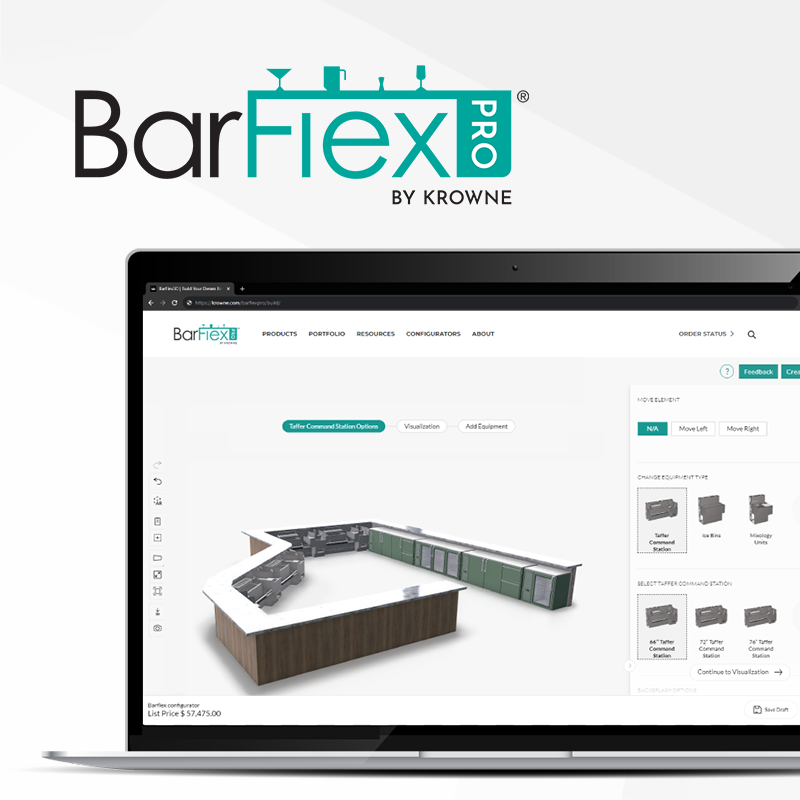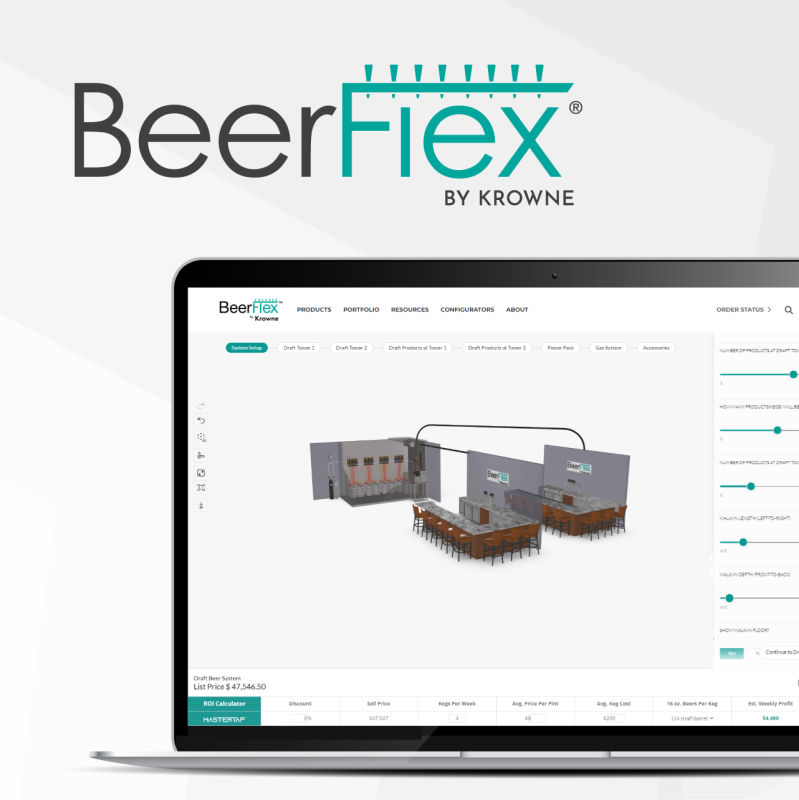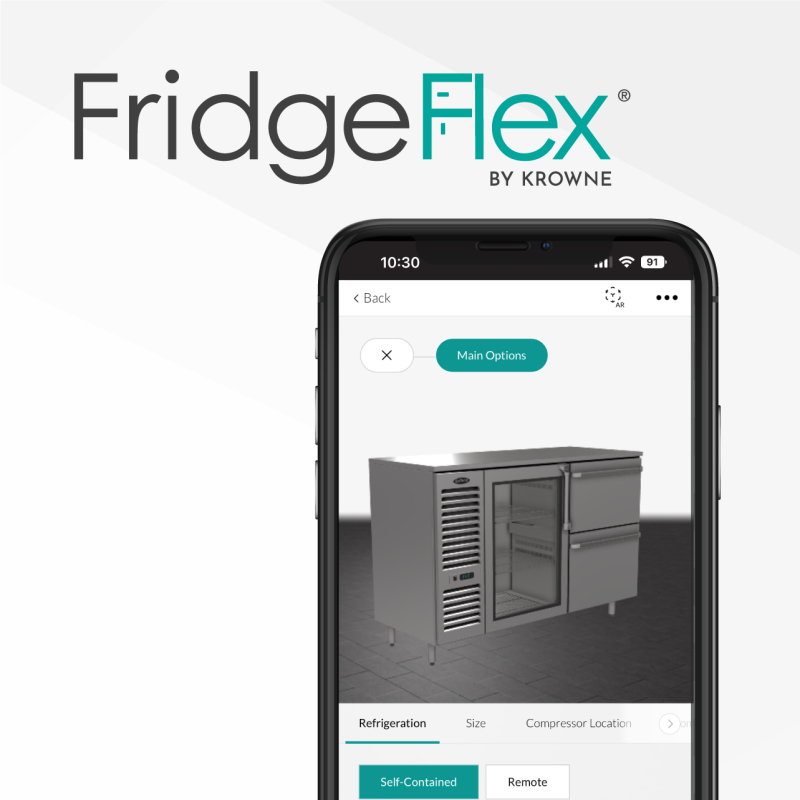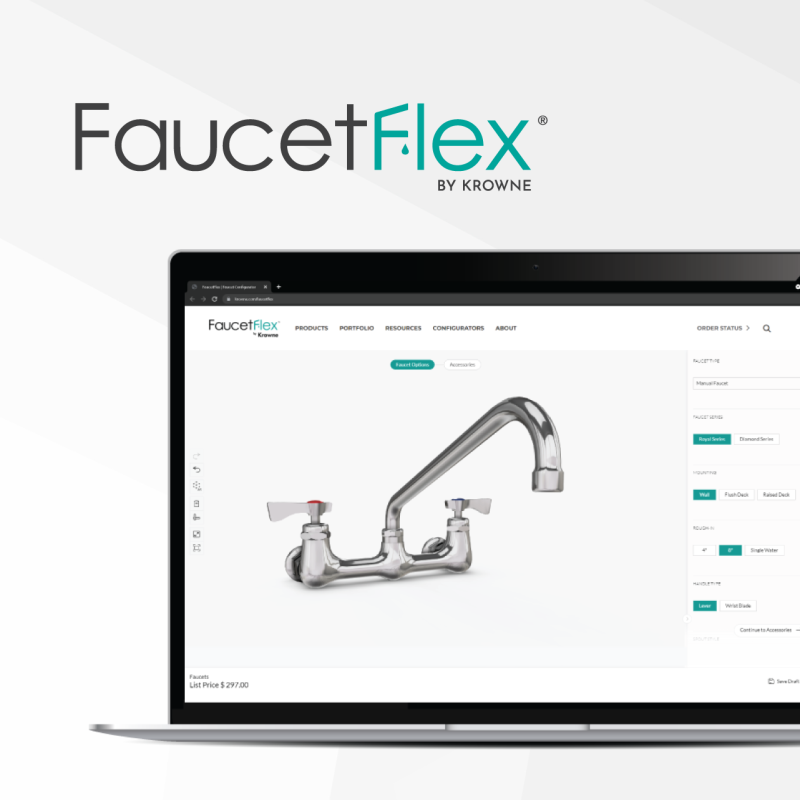Everything You Need to Know About CO2 Frosters
December 27, 2022 | Equipment 101
CO2 Frosters are one of the hottest new equipment trends in the bar industry. They chill glasses, remove all lingering odors, and sanitize all in one simple step. Is a CO2 froster really worth the expense though? Here is everything you need to know before purchasing a liquid CO2 Froster.
Why Should you Get a CO2 Froster?
While CO2 Frosters can elevate the cocktail process and customer experience, they also have many practical uses. In just a few seconds they neutralize odors often caused by the cleaning process or odors from the water supply while maintaining optimal drink temperature, even with warm glasses. Because CO2 is a dry gas and chills the entire glass uniformly, normal thermal shock concerns, which crack warm glasses, do not apply.
While the common glass rinser charges the inner wall of a glass to help in producing the proper head on a beer, the water remains and dilutes your drink effecting the taste of the cocktail or beer. If a glass freezer is used it also has the same dilutive effect as the condensed water droplets melt and can also impart unwanted odors. CO2 gas creates the same surface tension without dilution or unwanted odors making this a perfect solution for bars and breweries.
Breakdown of the Glass Froster

What Type of CO2 is Required for Use?
Required:
A CO2 tank with a SIPHON TUBE is required for CO2 frosters to operate properly. CO2 becomes liquid when compressed. This liquid CO2 is denser than gas and sinks to the bottom of the cylinder. The siphon tube draws the liquid CO2 from the bottom of the tank and brings it to the exit point of the froster where it converts to gas and creates a temperature drop to approximately -120 degrees Fahrenheit. If there is gas exiting the unit but not chilling glasses, the unit is either out of liquid CO2 or is connected to the wrong type of cylinder. The normal cylinder used for beer and soda will not function properly. Liquid CO2 is what is frosting your glass!
Recommended:
We recommend a 20-pound aluminum tank with a handle which is lighter and easier to move around. Larger tanks can be used in some cases where the cylinder can be stored within an acceptable range of the unit. As the diagram above indicates, larger tanks can often be placed in a storage area close to the unit with the line fed through walls and/or floors if necessary.
CO2 Froster Tube Length
We offer two different tube lengths to get CO2 from the tank to you: 10’ and 40’.
- Whichever tube length you decide on is permanent. The tube length is not field upgradeable due to the specific technical design used to control the flow and maintain the liquid CO2 in the line between uses. This feature is unique to the Krowne Froster.
- Our 40’ tube is perfect for saving space and changing cylinders without inconveniencing bar staff by placing the tank on a different floor/room than your unit.
- All units are available in the 10- or 40-foot tube length but again cannot be modified in the field.
- Krowne’s liquid CO2 glass froster cabinet comes standard with the 10’ length.
Functionality of CO2 Frosters
- Krowne’s tabletop models are a great space saving alternative to mug frosters, allowing more equipment in the same bar layout.
- While the primary use for these frosters is for glasses, you can use CO2 frosters on most bar tools including decanters, growlers, shakers, and more!
Benefits of CO2 Froster
- With a cabinet model, the tabletop is at working level, with the CO2 tank below
- The drop-in model is the most popular. This froster is integrated into the bar top. Elevating the customer experience with each drink made.
- You can use a glass chiller both indoors and outdoors with the rechargeable battery.
- All electrical parts are sealed and made to resist all weather conditions.
- While the glass froster is a great step in your sanitation process, it should be the last line of defense in a multi-layered approach to sanitization without slowing service.
- The froster quickly chills glasses compared to both freezers and ice makers.
- Overall, the frosters reduce ice consumption of the venue. Frosters can lower the temperature of the glass to -4 degrees Fahrenheit.
Frequently Asked Questions
Question: Can I use the 40’ CO2 Line instead for the 10’ CO2 Line that comes with the KR-LC2GF Glass Froster Model?
Answer: NO – you would need to purchase the KR-LC2GF-E with the 40’ Glass Froster Model. These lines are not interchangeable in the field.
Question: Can the CO2 Line be removed on the KR-LC2GF Glass Froster Model?
Answer: No – the line is not interchangeable in the field. If it is removed or altered in any way on any model, it can cause the Froster to no longer work properly and in most cases will need to be returned to the manufacturer.
Question: What type of CO2 tank do I need?
Answer: You need a tank that requires the following:
- A cylinder tank with SIPHON TUBE (bottom draw)
- An aluminum tank with handle (recommended)
- 20-pound tank (will chill 400-500 glasses; recommended)
- We recommend stocking a minimum of 2 cylinders per unit
Question: Does Krowne sell CO2 tanks?
Answer: Krowne does not currently sell CO2 tanks.
Question: Where do I get the CO2 from? How much does it cost?
Answer: You can get a CO2 tank from a local distributor. Typically, these tanks cost $150-200 with $25-50 to refill. Google “CO2 provider near me” to find those closest to you.
Question: Can I run multiple CO2 Glass Froster units to one CO2 tank?
Answer: No- Each unit requires its own dedicated tank. If you plan to have more than one unit in a bar set up, we recommend purchasing our BD24 backbar dry storage cabinet with reinforced floor. You can fit multiple tanks inside and run all lines to one central area in your bar.
Question: When I try frosting a glass, LED lights are activating, and gas is exiting the unit, however, the glass is not frosting or getting cold. What is happening?
Answer: If gas is exiting the unit, it is working properly. In nearly all cases, this problem is caused by one of the following:
- The wrong CO2 tank is connected.
- Even if the cylinder indicates that it has a siphon or eductor tube, that is no guarantee that one is installed or connected properly. Occasionally, the cylinders are modified without updating the indication on the outside.
- As the siphon tube tank begins to exhaust all the available liquid CO2, the unit will at some point stop chilling because some CO2 gas will always remain in the tank, however it is void of the necessary liquid CO2.
- The most common issue is a NON siphon tube cylinder is connected to the unit.
- This cylinder will not work on the Froster. You must specify and confirm when ordering CO2 cylinders, that your vendor understands the Froster requires liquid CO2. Again, if gas is exiting the froster it is working properly. Either the tank is empty or does not have a siphon tube.
- Does the CO2 Froster require a dedicated CO2 tank?
- The unit cannot be hooked up to bulk CO2, beer CO2 lines, or soda CO2 lines. The drawing below indicates the proper tank required to function properly.

Topics: Equipment, Glass Frosters, Bar Equipment, Bartending





